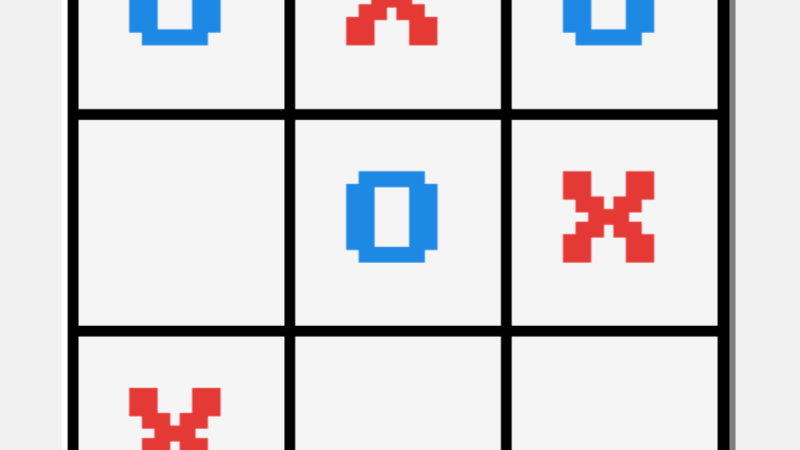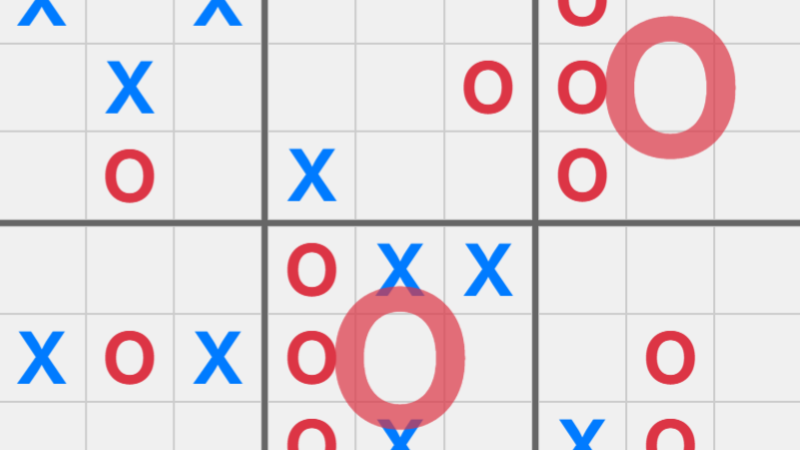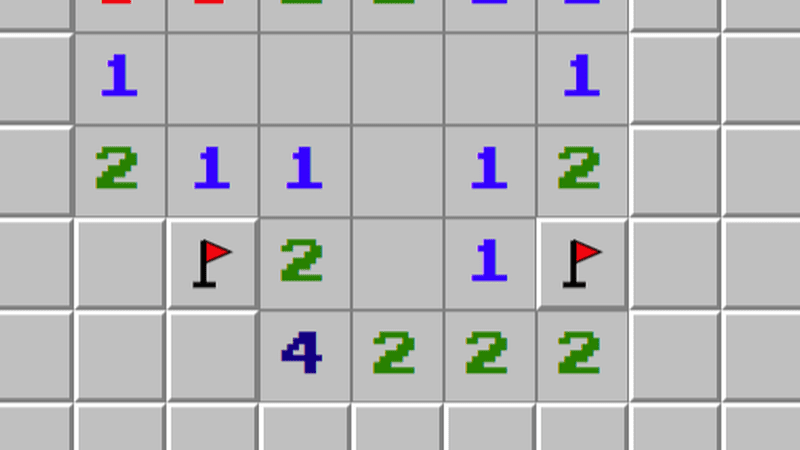Dots and Boxes
Tap lines to complete boxes and win.
How to Play Dots and Boxes
Welcome to Dots and Boxes! This classic strategy game challenges you to outsmart the AI by completing more boxes on a grid of dots. What starts as simple line-drawing quickly evolves into a complex battle of tactics, foresight, and strategic sacrifice.
Basic Rules
- The Goal: Complete more boxes than the AI on the 4×4 box grid (formed by a 5×5 dot arrangement).
- Taking Turns: Players alternate drawing lines between horizontally or vertically adjacent dots.
- Drawing Lines: Click or tap on the space between two dots to draw a connecting line.
- Completing Boxes: When you draw the fourth and final side of a 1×1 box, you earn one point and the box is marked as yours.
- Extra Turns: Completing a box grants you an immediate additional turn. If that move creates another completable box, you can continue the chain!
- Chain Reactions: Multiple boxes can be completed in sequence when your move opens up a chain of three-sided boxes.
- Winning: The game ends when all possible lines are drawn. The player with the most completed boxes wins!
Tips for Beginners
- Avoid Creating "Three-Sided Boxes": Don't draw the third side of any box unless absolutely necessary, as this gives your opponent an easy completion.
- Make "Safe" Moves: Early in the game, focus on drawing lines that don't create scoring opportunities for your opponent.
- Count Potential Chains: Look for groups of boxes that could be completed in sequence - these chain reactions are crucial for victory.
- Think Ahead: Before making any move, scan the entire board to see how your line affects the overall position.
- Force Difficult Decisions: When you must make an "unsafe" move, try to force your opponent into an equally difficult position.
- Stay Patient: Don't rush. Take time to analyze all possible moves and their consequences.
Advanced Strategies
- The Double-Cross Strategy: Sometimes sacrificing a few boxes early can set up larger chain captures later. Be willing to give up 1-2 boxes to control a longer chain.
- Chain Control: Identify who will get to start the last major chain reaction. Manipulate the game state so that you, not your opponent, get this crucial advantage.
- Sacrifice Tactics: Advanced players deliberately create unfavorable positions that force opponents into even worse situations. This requires calculating several moves ahead.
- Endgame Precision: In the final phase, every move matters. Count exactly how many boxes each possible chain offers and plan accordingly.
- Parity Control: Understand odd/even turn dynamics. Sometimes the key is controlling who has the last forced move in each section of the board.
- Forcing Sequences: Create positions where your opponent has no choice but to make moves that benefit you. This requires deep tactical vision.
Controls & Accessibility
- Line Drawing: Click or tap the space between any two adjacent dots to draw a connecting line.
- Visual Feedback: Completed boxes are clearly marked with player colors and text ("You" or "AI").
- Score Tracking: Real-time score display shows current box totals for both players.
- Turn Indicators: Clear visual cues show whose turn it is to move.
- Restart Function: Start a new game anytime with the restart button.
- Responsive Design: Optimized for play on desktop, tablet, and mobile devices.
Benefits of Playing Dots and Boxes
Dots and Boxes offers substantial cognitive and strategic benefits:
- Strategic Planning: Develop long-term thinking skills by considering consequences multiple moves ahead.
- Pattern Recognition: Learn to identify chain opportunities and strategic configurations quickly.
- Spatial Reasoning: Improve visualization of geometric relationships and spatial connections.
- Decision Making: Practice weighing immediate gains against long-term strategic advantages.
- Risk Assessment: Learn to evaluate when risky moves are worthwhile and when safety is paramount.
- Mathematical Thinking: Engage with combinatorial concepts and counting principles.
- Patience and Focus: Build concentration skills through careful analysis of complex positions.
- Competitive Strategy: Develop skills in anticipating and countering opponent strategies.
The Mathematical Beauty of Dots and Boxes
Despite its simple appearance, Dots and Boxes is a mathematically rich game studied in combinatorial game theory. The game exemplifies important concepts including graph theory (where dots are vertices and lines are edges), game tree analysis, and strategic complexity.
Researchers have proven that even on small grids, optimal play requires sophisticated strategic thinking. The game demonstrates how adding simple rules (like extra turns for completing boxes) can create emergent complexity that challenges even experienced strategists.
The chain reaction mechanism makes Dots and Boxes particularly interesting mathematically, as it creates situations where the value of a move depends heavily on the resulting position's structure, not just immediate point gains.
Historical Context and Cultural Impact
Dots and Boxes was first published in the 19th century by French mathematician Édouard Lucas, who originally called it "la pipopipette." Lucas was also famous for creating the Tower of Hanoi puzzle and making significant contributions to number theory.
Over the decades, the game has appeared under many names worldwide: Dots and Squares, Boxes, Square-it, Pigs in a Pen, and others. Its universal appeal lies in requiring only paper and pencil, making it accessible across cultures and generations.
The game's combination of simple rules with deep strategy has made it a favorite among mathematicians, educators, and game theorists. It serves as an excellent introduction to strategic thinking concepts while remaining genuinely fun and competitive.
Frequently Asked Questions
What happens if I complete multiple boxes in one move?
You get credit for all completed boxes and continue taking turns until you make a move that doesn't complete any boxes. This can lead to large point swings through chain reactions!
How smart is the AI opponent?
The AI uses strategic algorithms to play competitively. While not perfect, it provides a challenging opponent that will punish obvious mistakes and capitalize on tactical opportunities.
Is there always a winner, or can games end in ties?
On a 4×4 grid (16 total boxes), ties are impossible since 16 is an even number. One player will always have more boxes than the other.
What's the best opening strategy?
Generally, start by making "safe" moves that don't create three-sided boxes. Focus on drawing lines in the center area initially, as edge and corner lines tend to create more immediate scoring opportunities for opponents.
How can I improve my strategic thinking?
Practice visualizing chain reactions, study the board position after each AI move, and always ask "What does this move enable my opponent to do?" Regular play will gradually improve your tactical vision and strategic understanding.






